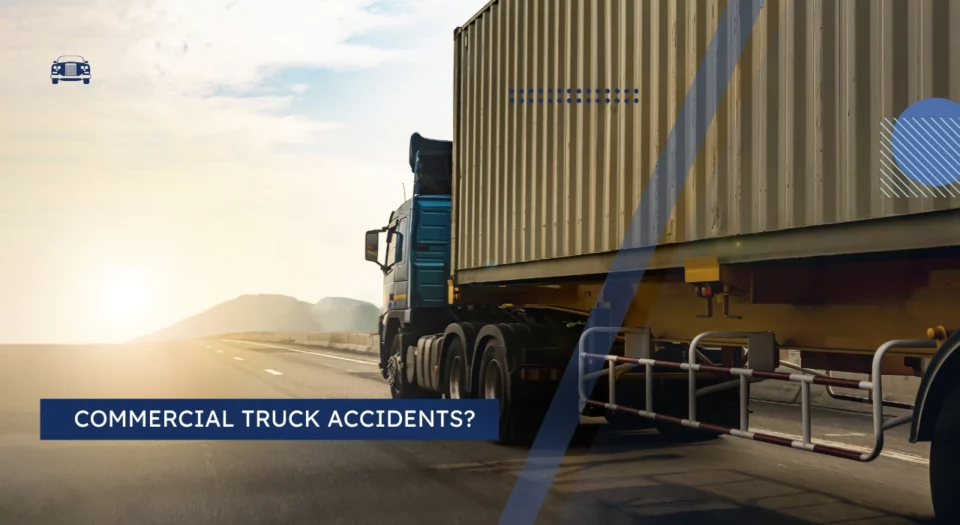Commercial trucking serves an essential purpose for transporting large quantities of goods across long distances throughout Jacksonville, Florida, and beyond. The bustling Port of Jacksonville, one of the nation’s largest deep-water ports, handles millions of tons of cargo annually, making the city a critical hub for commercial transportation. With Interstate 95, Interstate 10, and Interstate 295 intersecting in Jacksonville, the area sees heavy commercial truck traffic daily. However, the pressure to meet tight shipping deadlines from these major distribution centers may be contributing to the increase in truck accidents across Florida’s roadways.
This problem extends beyond safety concerns—it’s about the balance between profit and human well-being. When drivers face unrealistic delivery schedules, especially navigating Jacksonville’s complex highway system during peak traffic hours, the risk of accidents increases significantly. If you or a loved one has been involved in such an incident, consulting with a Jacksonville Truck Accident Lawyer can help you understand your legal options and pursue the compensation you deserve.
The Pressure of Time Constraints
Trucking companies usually work on tight timelines. Shipments have to be delivered on time to meet customer needs. This creates an urgency that can make drivers push their limits, with fatigue often being just one crash away. Fatigue reduces reaction times and increases the chances of making mistakes, creating dangerous circumstances on the road.
Impact on Driver Health
The pressures of delivering on time can be extremely detrimental to a driver’s health and well-being. Chronic fatigue can result from too many hours behind the wheel without adequate rest. This condition affects not only physical health but also mental clarity. Stress takes a massive toll on drivers, making them more prone to mistakes that can endanger those around them as well.
The Role of Incentive Structures
The trucking industry often uses incentive structures that focus on making deliveries on time. Drivers face bonuses for arriving early or on time that indirectly incentivize them to sacrifice the speed-safety balance. These incentives are designed to maximize productivity, but often carry the unintended consequence of promoting risky behaviors like speeding or skipping breaks. According to the Federal Motor Carrier Safety Administration, hours-of-service violations remain among the top causes of commercial vehicle accidents nationwide.
Regulations and Enforcement
There are rules in place to prevent drivers from being overworked or becoming fatigued. However, enforcement can be inconsistent. Some organizations prioritize profits over safety and exploit loopholes to avoid regulation. To keep not just drivers safe, but other road users as well, it is vital to strengthen enforcement and compliance.
Technology as a Safety Net
There are several technological developments that can improve trucking safety levels. Modern computerized systems can monitor driver behavior and alert them to take breaks when necessary. Utilizing GPS tracking and telematics means that businesses have access to real-time data that can help them plan smarter routes to relieve pressure on their drivers. This technology ensures that delivery timelines are not compromised while promoting safer practices.
Training and Education
Well-designed driver training programs can minimize the risk of accidents as well. Comprehensive training in fatigue management, defensive driving, and stress-related driving protocols would give drivers the tools necessary to navigate through challenging situations. Continued education helps establish a culture of safety and encourages proper driving practices.
Redefining Success in Trucking
There has to be more to trucking success than delivery speed. We can create a more sustainable industry by redefining success to encompass safety and well-being. Companies that prioritize their drivers’ health and safety may eventually see this pay off in lower accident rates and reduced turnover.
Collaboration for Safer Roads
Roadway safety can be enhanced when the industry works together. Collaboration between stakeholders, including trucking companies, regulators, and drivers, helps address safety challenges. Open communication and cooperation can lead to initiatives that raise industry standards and help keep everyone safe on the road.
Conclusion
Shipping deadlines are necessary in the trucking world, but they can contribute to accidents. Striking a balance between efficiency and safety is not straightforward. By addressing the challenges of time limitations, improving regulations, and adopting technology, the industry can move toward to creating a safer environment for drivers and everyone else on the road. The path to a more sustainable future in trucking starts with safety first, speed second.

